Mind the Gap: Great Central Railway to be joined after 40 years
- Published
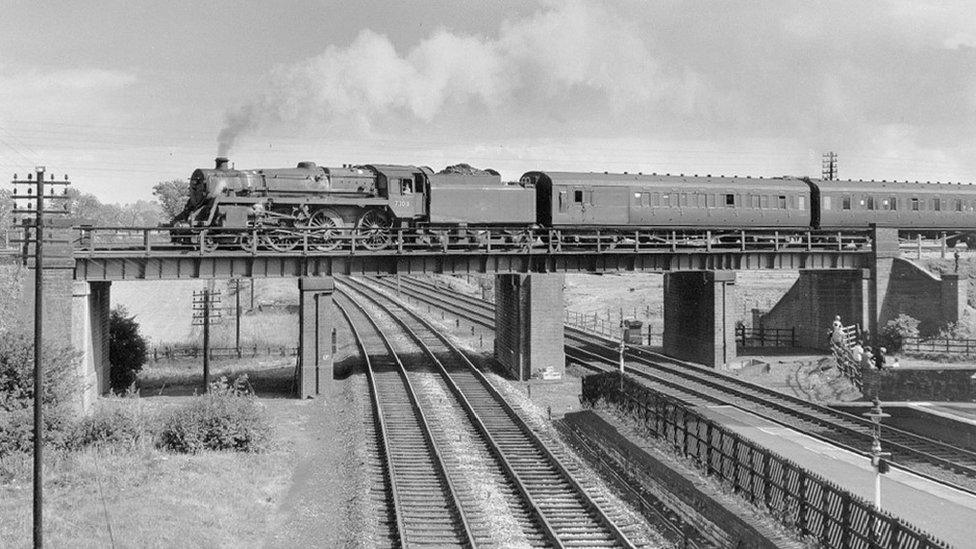
In the 1950s, the old Great Central Railway bridge, in Loughborough, carried locomotives over four tracks of the main line
Work to reconnect two parts of a railway line which was divided into two over three decades ago has begun.
The Great Central Railway, between Leicester and Nottingham, was left with a 500m gap after infrastructure, including bridges, were removed.
A new £2.5m bridge, in Loughborough, is the first stage to rejoin the 18-mile (29km) railway, described by GCR as the "UK's only main line heritage railway".
The £8m project is due to be completed by 2019.
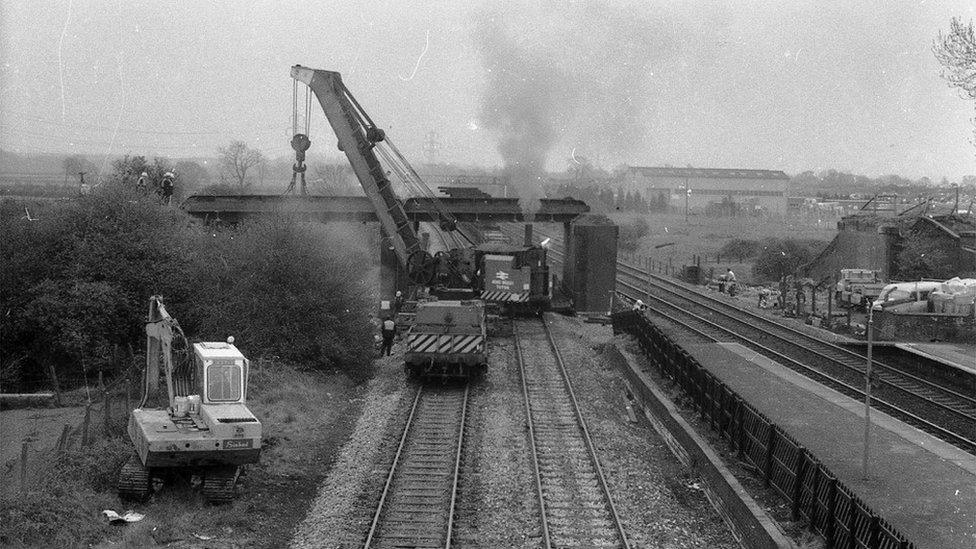
The Loughborough bridge was demolished in the early 1980s after GCR was closed by British Rail in the late 1960s
One section of the railway runs from Leicester to Loughborough - the GCR - and the other from Ruddington, in Nottinghamshire, to North-West Leicestershire - the GCRN.
Separating the two railways is the gap where tracks, embankments and bridges were removed in the early 1980s.

Great Central Railway History

Opened in 1899 - linking Manchester, Sheffield, Nottingham, Leicester, Rugby to London.
Closed in 1966, but a section from Leicester to Loughborough was saved by a group of enthusiasts.
In 1976, Great Central Railway PLC was formed, which runs trains from this section of the track.
In 1989, Great Central Railway Nottingham took over the former MOD site at Ruddington - the last MOD train ran out of there in 1983.
Services are pulled by steam or diesel locomotives aiming to recreate the experience of train travel from the 19 Century.
It's the only place in the world where full size steam engines can be seen passing each other.
Around 130,000 people visit the railway each year.
Source: GCR, external and GCRN, external

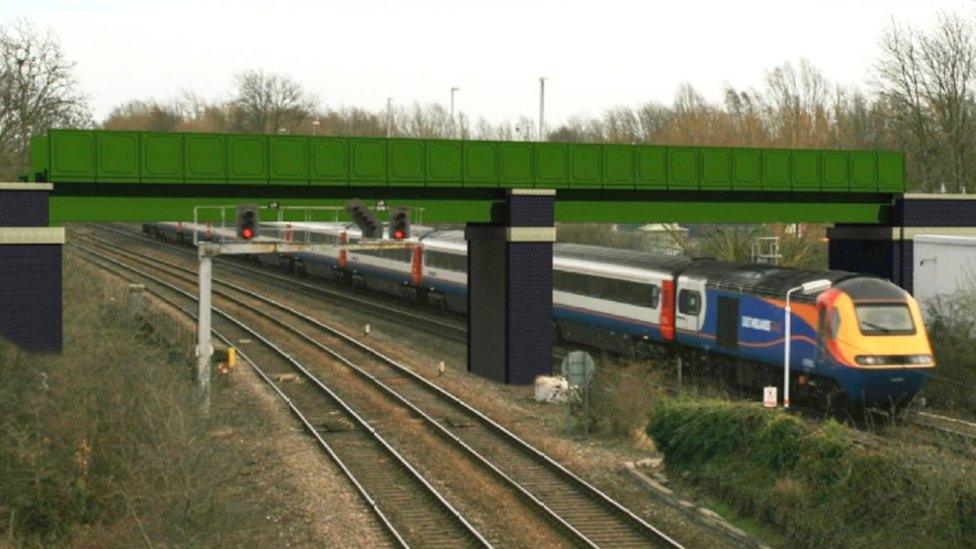
An artist's impression of the new 30-metre bridge as part of GCR's £8m project to reconnect the 18-mile heritage railway
The new 30m bridge will carry a single track of the heritage railway over the main line between Derby and London St Pancras.

An engine standing at GCR's Loughborough Station in 1975
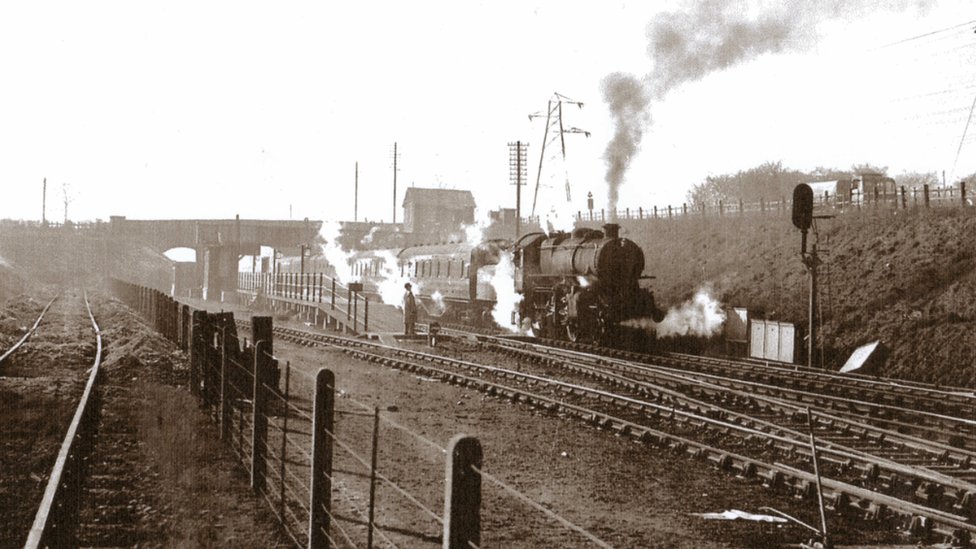
A locomotive travelling on the heritage line between Ruddington, in Nottinghamshire, and North-West Leicestershire
Bill Ford, of GCR, said the start of the project was "a very exciting moment".
"We have cherished this vision for decades, so to finally make a start on the ground is very important for us," he said.
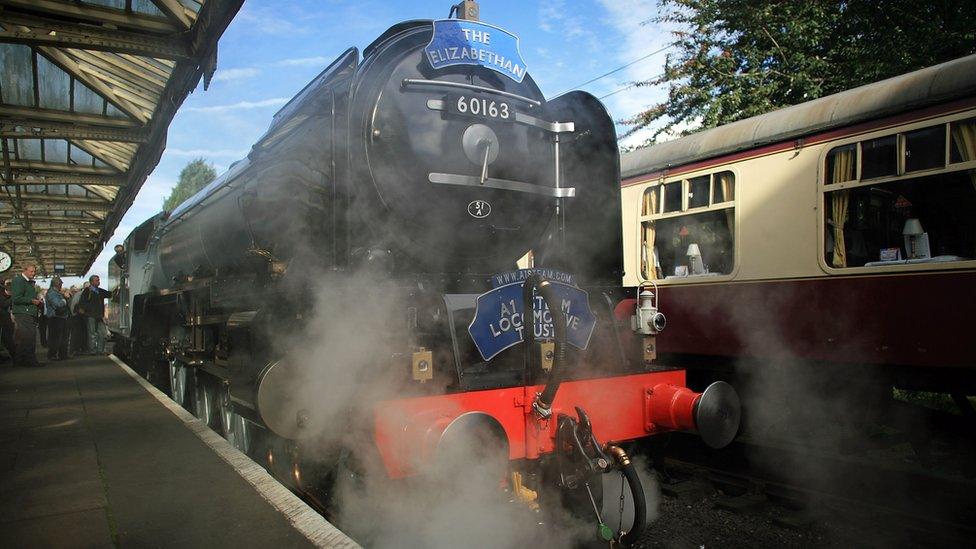
The Tornado, which was the first steam train to be built in Britain for almost 50 years, pulls into the Great Central Station in Loughborough in 2008
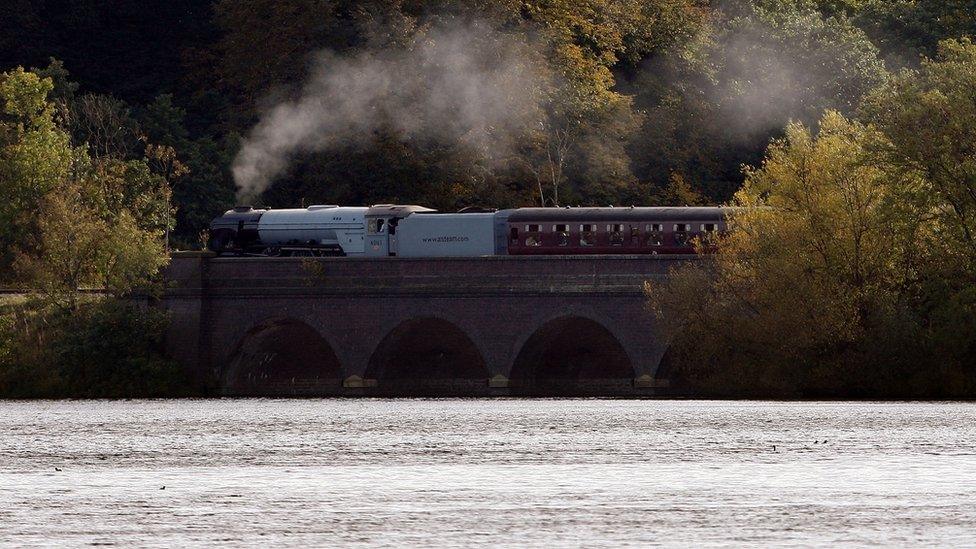
The Tornado steams its way across Swithland Reservoir, in Leicestershire, on the UK's only main line heritage railway
Nicky Morgan, MP for Loughborough, performed a traditional Victorian style "turf cutting" ceremony to mark the start of the work.
"It was fantastic to be a part of history," she said. "This is a project that has been talked about for 40 years."
"It's going to bring big benefits to our local area - more tourism, more visitors, more employees... I'm really excited to be a part of it."
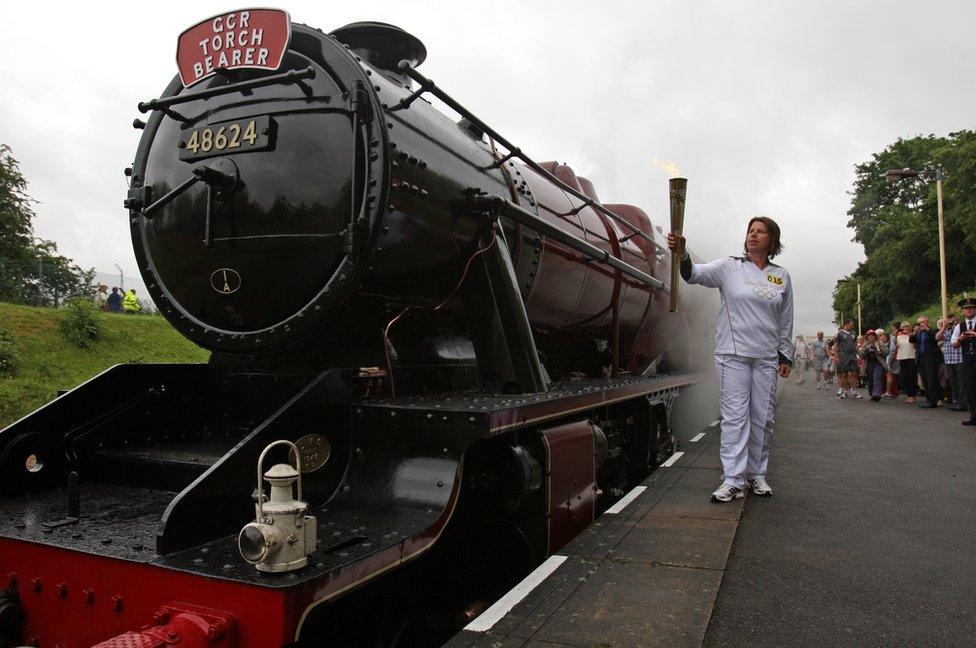
The Great Central Railway was part of the 70-day Olympic Flame Torch Relay, in 2012, where 8,000 torchbearers were involved
Paul Kirkman, of the National Railway Museum, said: "Leicester had one of the world's earliest railways and was also a hub of the Midland line.
"This joining of the line seems another positive step towards making the area and region rich in railway heritage, and inspiring a new generation to get involved in our nation's railway story."
The project also involves reinstating embankments and repairing other bridges which have survived along the gap.
- Published30 November 2014
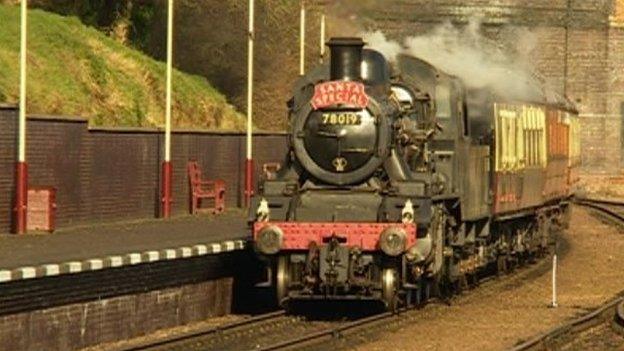
- Published2 July 2013
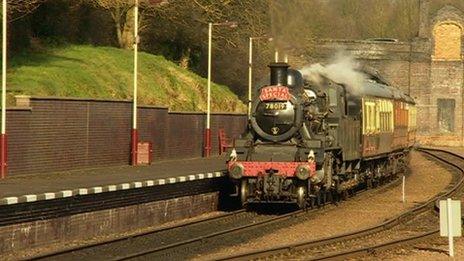
- Published30 August 2011
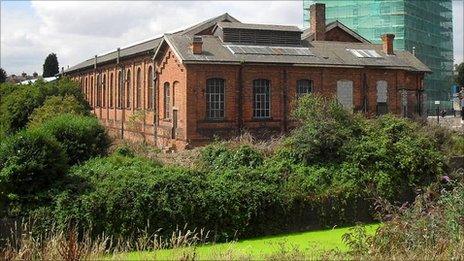
- Published15 July 2011
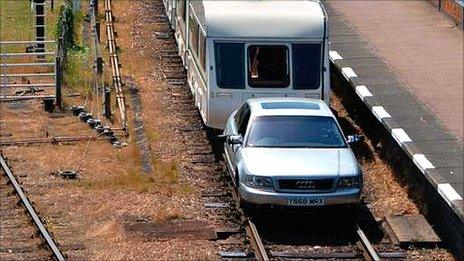
- Published14 April 2011
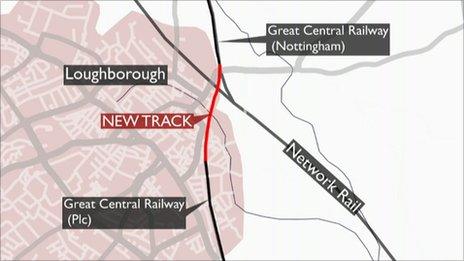
- Published3 November 2010